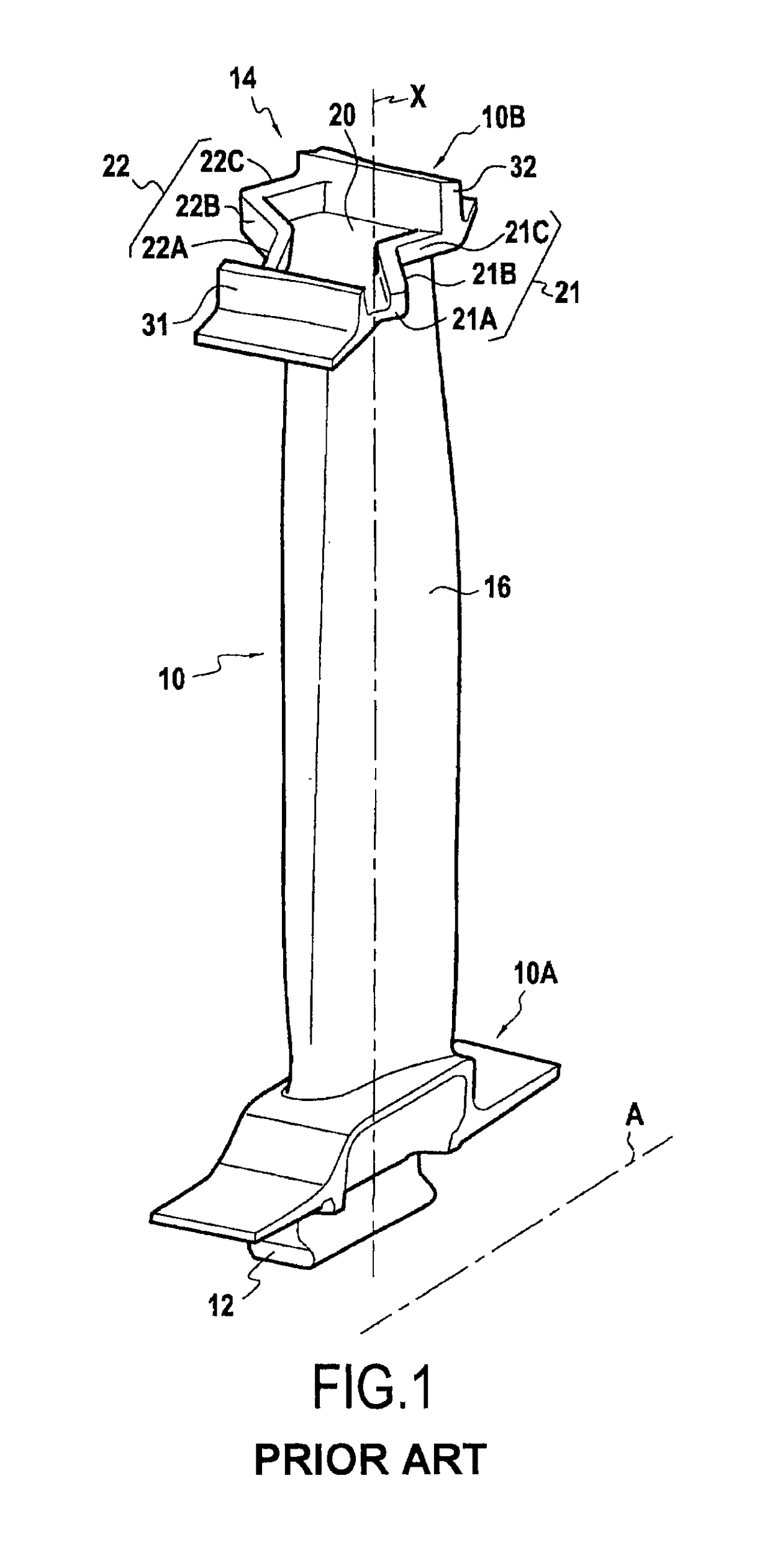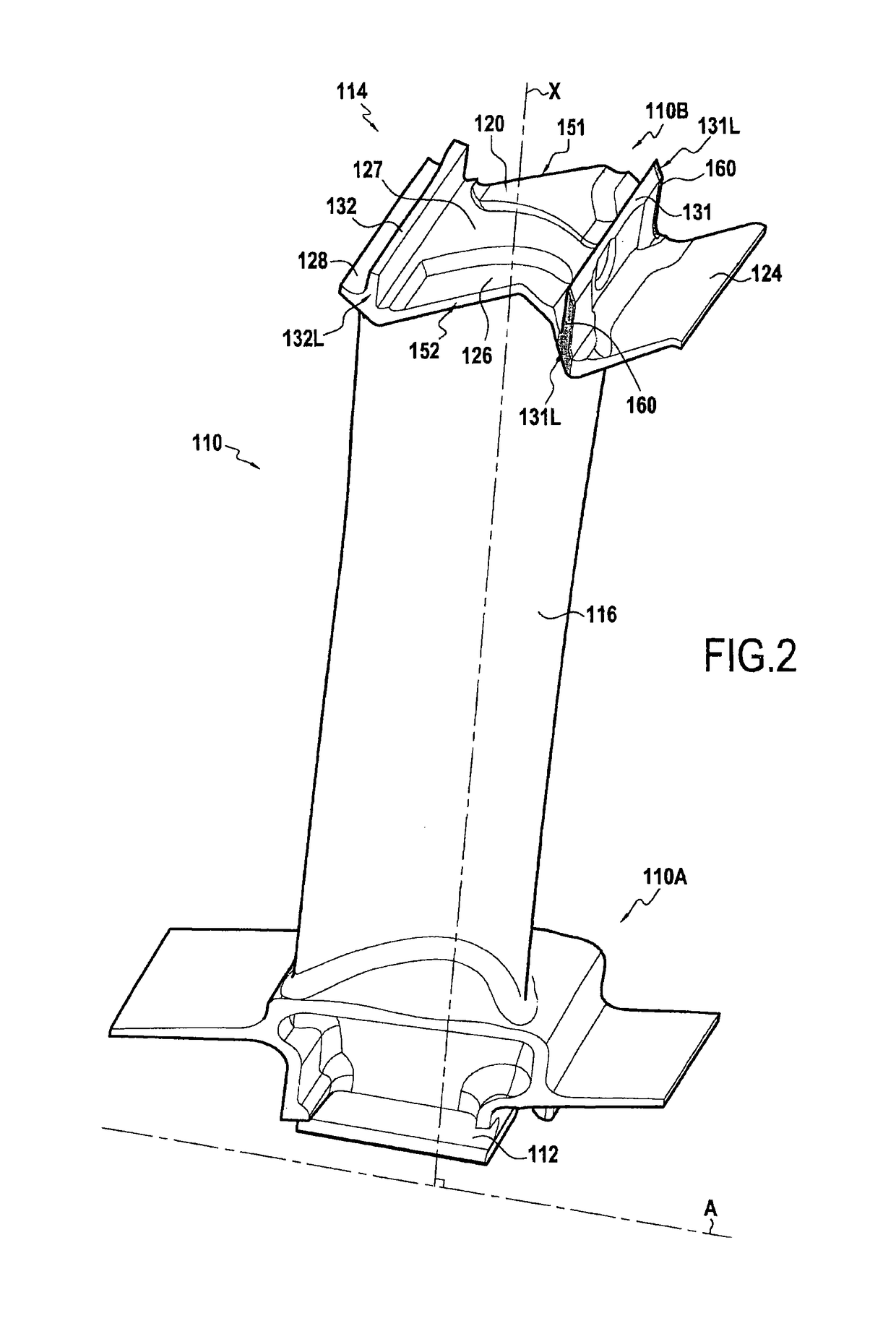Turbomachine rotor blade
a rotor blade and rotor blade technology, applied in the direction of machines/engines, sustainable transportation, climate sustainability, etc., can solve the problems of difficult to avoid overflowing from these portions, difficult to deposit anti-wear material on these portions, aerodynamic losses in the gas flow passage, etc., to improve the mechanical behavior of the blade in operation, facilitate the fabrication of the blade, and improve the ability of the blade to.
- Summary
- Abstract
- Description
- Claims
- Application Information
AI Technical Summary
Benefits of technology
Problems solved by technology
Method used
Image
Examples
Embodiment Construction
[0055]Embodiments of a rotor blade with an outer part are described in detail below with reference to the accompanying drawings. These embodiments illustrate the characteristics and advantages of the invention. It should nevertheless be recalled that the invention is not limited to these embodiments.
[0056]FIG. 2 shows an embodiment of a turbomachine rotor blade 110. Such a blade may be used in a low pressure stage of an airplane turbojet.
[0057]The rotor blade 110 comprises an airfoil 116 extending along the stacking axis X of the blade between the proximal and distal ends 110A and 110B of the blade (i.e. its inner and outer ends). At its proximal end 110A, the blade has a root 112 whereby it is fastened to a rotor disk (not shown) of a turbomachine (not shown). This disk rotates about the axis A of the engine. At its distal end 110B, the blade 110 has an outer part 114.
[0058]When a plurality of rotor blades 110 are fastened to a rotor disk, their outer parts 114 are arranged side by...
PUM
 Login to View More
Login to View More Abstract
Description
Claims
Application Information
 Login to View More
Login to View More - R&D
- Intellectual Property
- Life Sciences
- Materials
- Tech Scout
- Unparalleled Data Quality
- Higher Quality Content
- 60% Fewer Hallucinations
Browse by: Latest US Patents, China's latest patents, Technical Efficacy Thesaurus, Application Domain, Technology Topic, Popular Technical Reports.
© 2025 PatSnap. All rights reserved.Legal|Privacy policy|Modern Slavery Act Transparency Statement|Sitemap|About US| Contact US: help@patsnap.com



